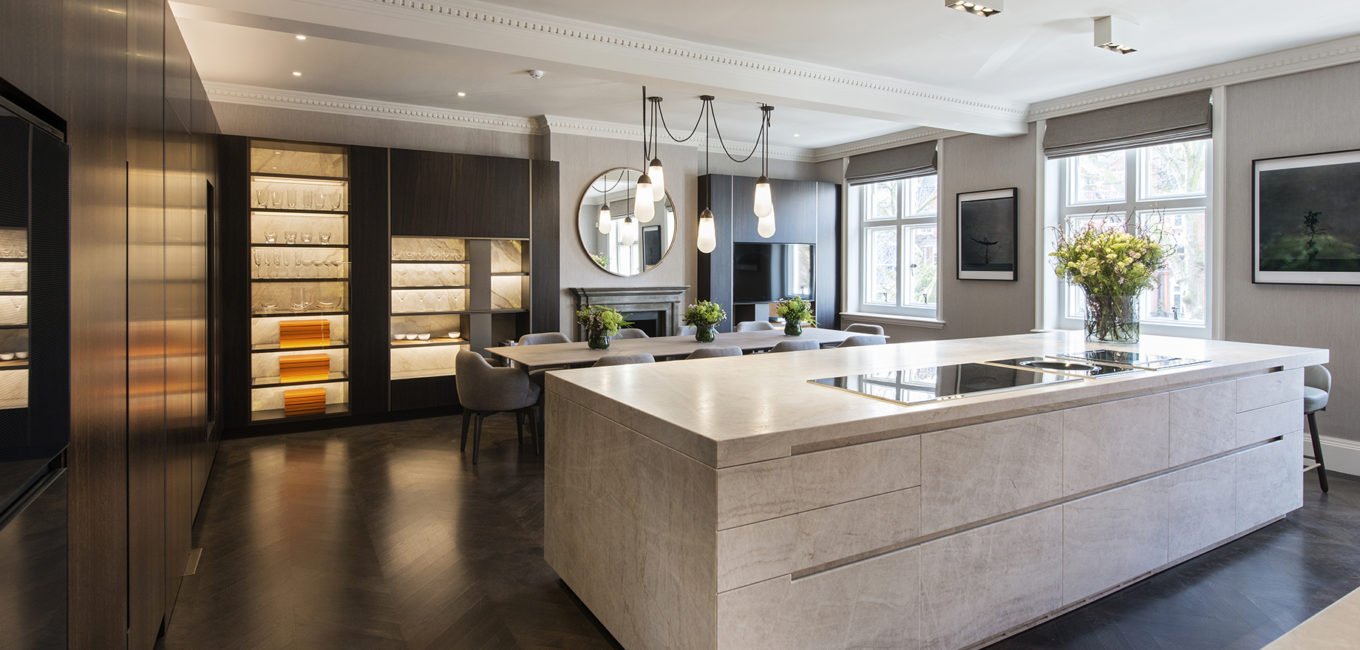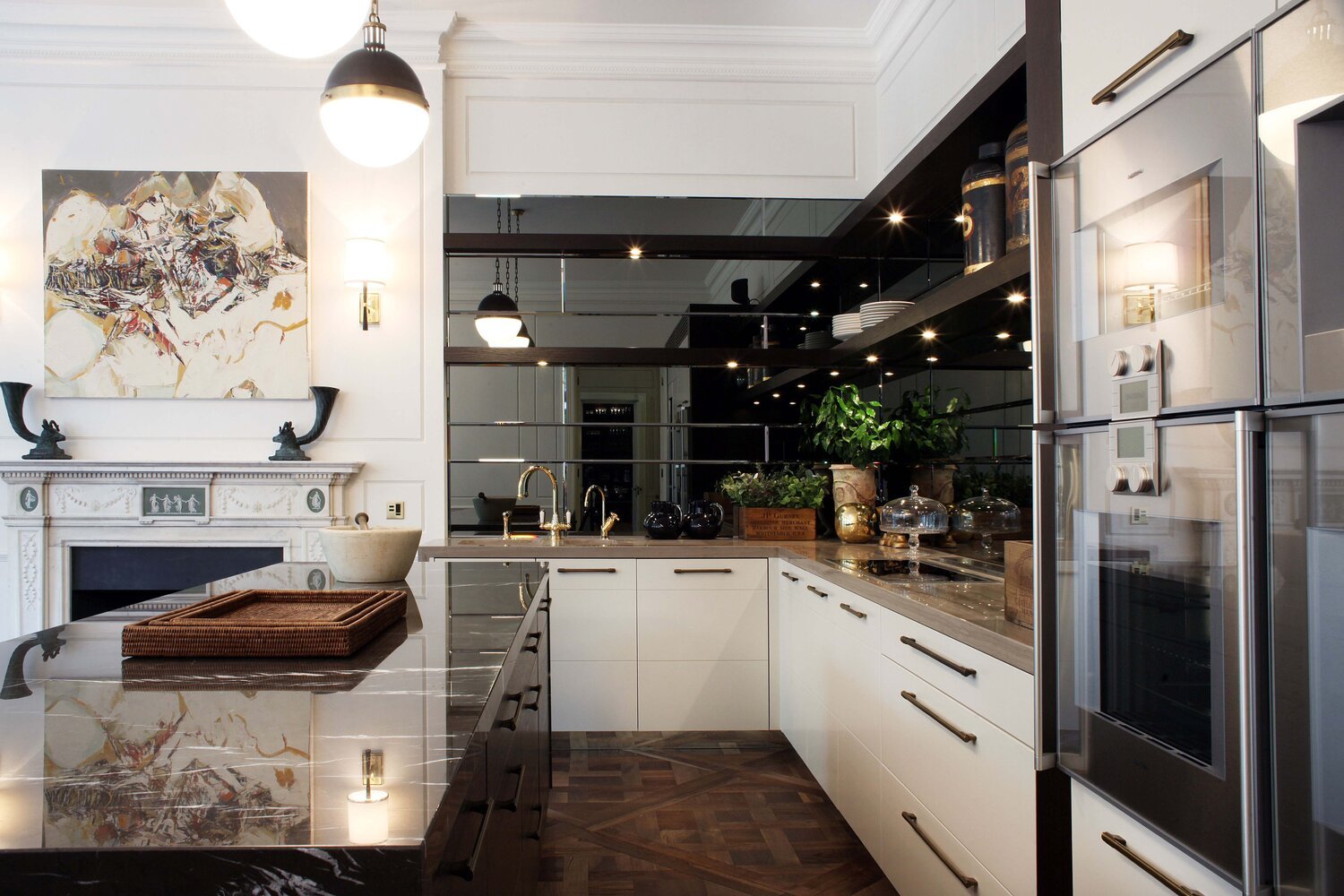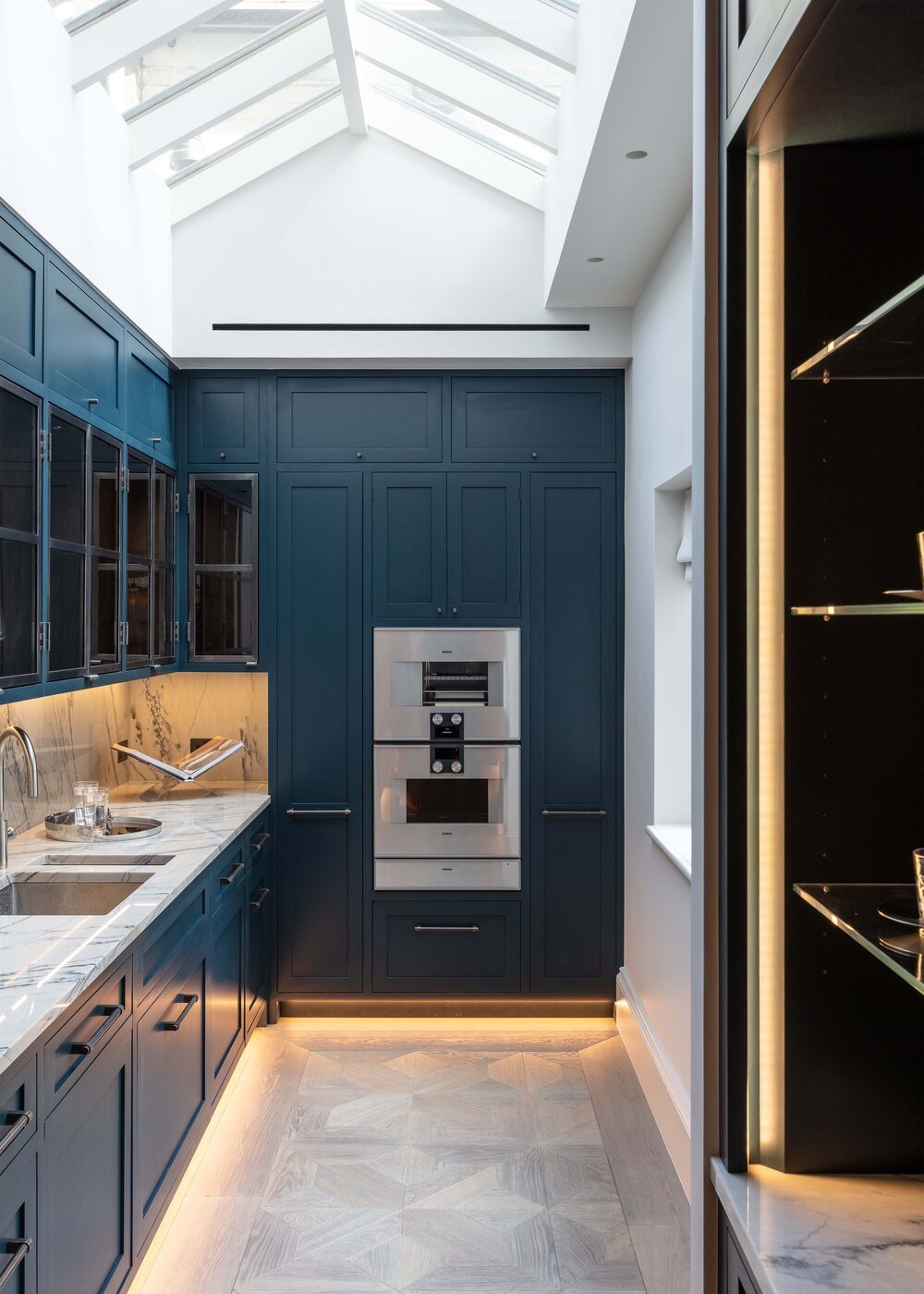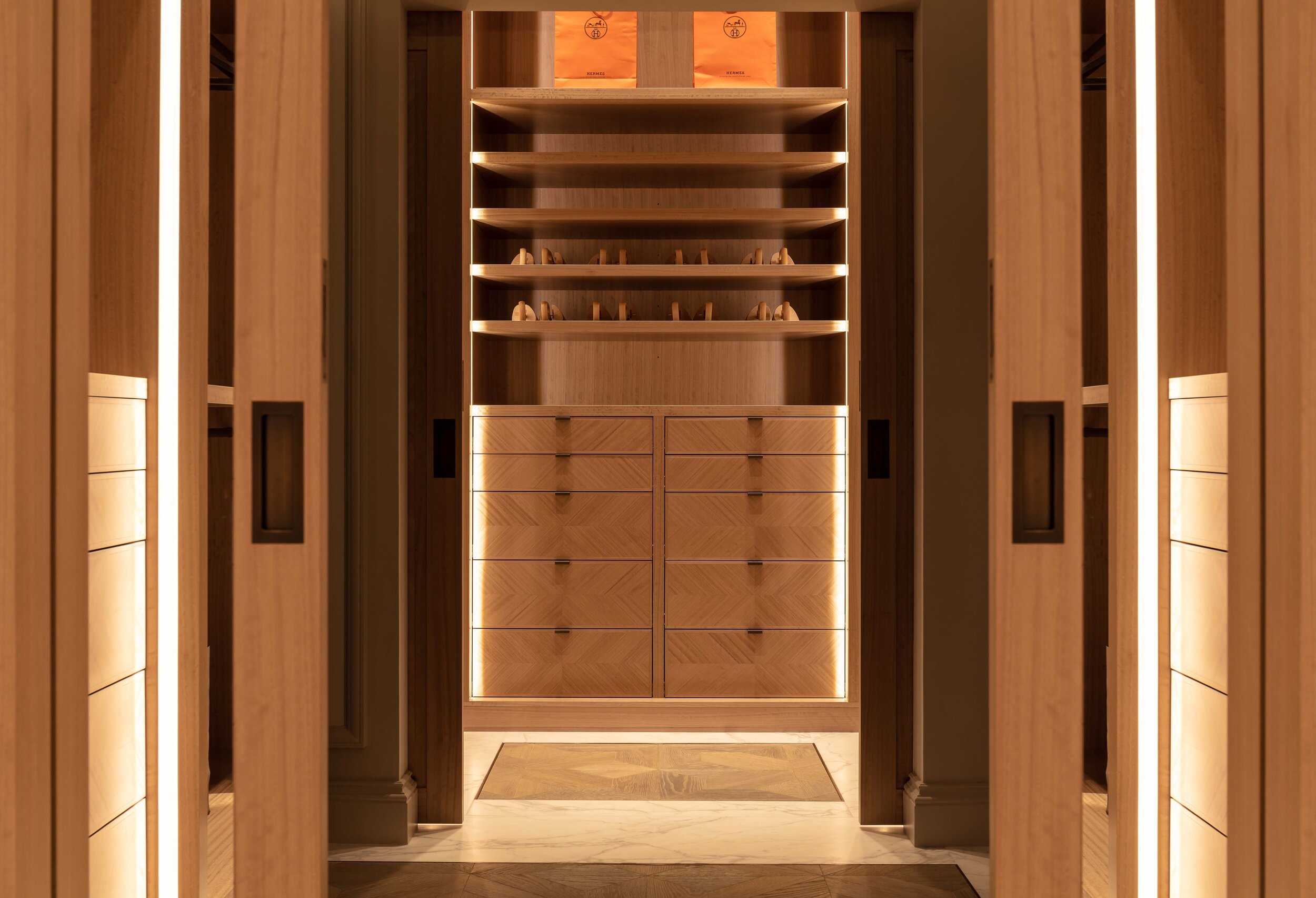Our guide to cabinetry finishes
Fitted and bespoke cabinetry can be used throughout the home, not just to provide storage space, but to present a beautiful and coherent look that flows throughout the whole design scheme. Here we’re going to look at some of the cabinetry finishes available for kitchens as well as other rooms.
The kitchen is often considered to be the heart of the home, so this social hub and the focal point have to be beautiful and elegant, using finishes that are totally practical and easy to care for. Our Joinery team can produce and design kitchen cabinetry as well as bespoke cabinetry for living rooms, bedrooms, bathrooms and studies. Oh, and also entrance hallways, boot rooms, cloakrooms and utilities! The options for kitchen cabinet finishes are more or less limitless when considering paint colour choices, veneer types, finishes, textures and colours.
What are the different types of cabinet finish?
The majority of cabinet finishes featured in many of our projects are real wood veneers, as well as painted and lacquered finishes. Real wood veneers are used for many kitchen projects, with walnut, cherry, maple, and oak finishes featuring in both classic and contemporary schemes. These finishes are usually veneers, which are generally sourced as veneered boards. These boards can be handled, cut, and used in the same ways as solid timbers and are used to construct kitchen cabinetry and joinery. For more details about veneers, click on our recent Guide to Veneers here. We work with kitchen design showrooms such as Eggersmann Design, and often our bespoke joinery and cabinetry for other areas of the home will be designed to complement and coordinate with the kitchen cabinetry. Real wood veneers with a ‘natural’ look – for example where walnut looks like walnut, rather than a coloured finish, are often chosen for classic or traditional schemes. For more contemporary schemes, lighter wood veneers can be used, such as maple, birch, or light oak. If a dark and dramatic contemporary finish is required, wood veneers can be stained in black, grey, or darker browns. There are also some more unusual cabinet finishes that are seen in ultra-contemporary kitchens, such as ceramic, stone, and glass. These finishes are thin layers of the named material that are fixed to the cabinet door and drawer fronts and carcass sides.
What is the most popular kitchen cabinet finish?
Painted finishes are often chosen for traditionally styled homes, where a colour, rather than a natural timber look, is required. Painted cabinets generally have a semi-matte, satin or eggshell finish. Matt finishes are available, but satin or eggshell is generally preferred as it’s slightly more forgiving regarding fingerprints, especially in the kitchen. One of the appeals of painted finishes is the physical ‘brush strokes that can be seen – many bespoke painted kitchens are hand-painted on-site. Painted finishes are sometimes used to re-create an antique or aged look, where the paint is rubbed away in some areas so that the original timber can be seen beneath the paint. This type of finish works well when the overall look is eclectic and quirky, perhaps mixing antique and distressed wall cabinets with items such as a large-scale island or butcher-block style feature.
Lacquered finishes are a favoured option where are super-smooth, perfectly plain look is required – perhaps where a handleless design has been chosen. Handleless cabinetry is often recessed into the wall so that it’s only the door and drawer fronts that are visible. This concept works beautifully where there is a tall bank of cabinets running the length of a room. The accompanying island can have contrasting door and drawer fronts; a current trend is to use a bold colour for the island and a lighter shade for the perimeter cabinets. The colour choice is generally huge. Kitchen brands have their own colour offerings, of course, but many high-end bespoke makers offer a colour match option too where the colour can be specified exactly, perhaps to match a piece of fabric or a favourite artwork. High gloss lacquered finishes look glamorous but can show fingerprints – which can easily be buffed away with a soft cloth. Matt or semi-matt lacquered finishes are slightly more practical and subtle. The combination of matt cabinetry and glossy work surfaces, and vice-versa, is striking and appealing. Contemporary lacquered kitchen cabinetry can also be enhanced with integrated lighting strips recessed into handle grooves, adding a decorative element to the finish.
What finish is best for cabinets?
The ‘best finish’ can vary, depending on which room the cabinetry is destined for. If we’re designing fitted cabinetry for a busy hallway, we would suggest a veneer or painted finish that we know would be robust enough to withstand the rigours of everyday use. The same would apply to cabinetry destined for a kitchen or perhaps for a family room. Sometimes it’s down to practicalities, such as knowing that a dark painted kickboard, plinth or skirting board is a realistic choice for the kitchen or the muddy boot room. Painted finishes are cleanable and of course, repairable should any minor scratches or wear and tear marks appear. Solid wood and wood veneered finishes can also be maintained and repaired if necessary. Bespoke wooden cabinetry and furniture is given a protective finish so that the colours and overall look of the furniture are maintained. Some of our bespoke cabinets may involve a unique combination of materials, such as lacquered door and drawer fronts combined with metal inlays, or fabric or leather panels. For these examples, the metal inlays would have a protective finish to maintain the shine/colour. Our designers and Joinery team will always be able to advise on the maintenance, cleaning and care of the materials and finishes used in our design schemes.




